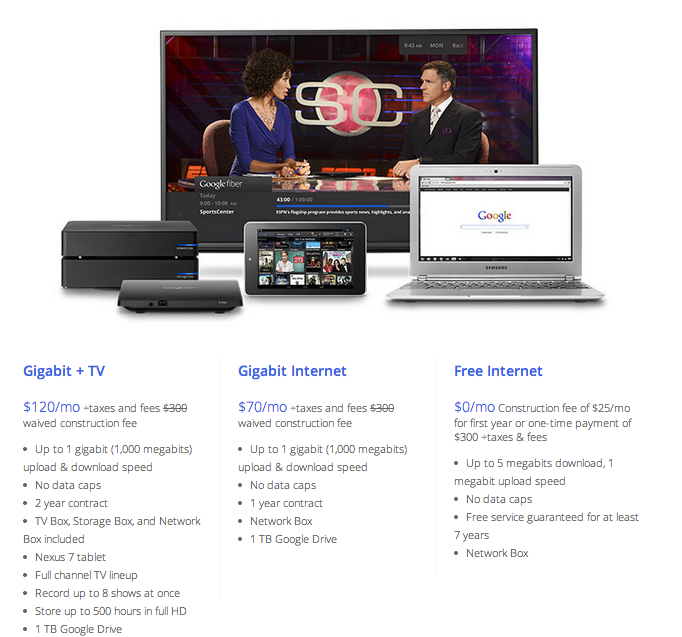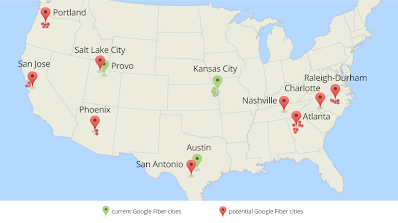Ed Note: Nobody likes buffering. So we’re trying to reduce it for our Google Fiber customers. Here’s another installment in our “Fiber Behind the Scenes” series, with a look at how we work to get your content to you as quickly as possible.
We’ve all had the moment where we scratch our heads and ask, “why is this video so slow?” Unfortunately, there’s no single answer to this question. Your video ‘packets’ of online bits and bytes have to travel a really long way, along several different networks, just to get to you, and they could be slowed down anywhere. So, because we know you want to stream videos and browse effortlessly, we’ve designed our network to minimize buffering.
Bringing fiber all the way to your home is only one piece of the puzzle. We also partner with content providers (like YouTube, Netflix, and Akamai) to make the rest of your video’s journey shorter and faster. (This doesn't involve any deals to prioritize their video ‘packets’ over others or otherwise discriminate among Internet traffic — we don't do that.)
Like other Internet providers, Google Fiber provides the ‘last-mile’ Internet connection to your home. Meanwhile, content providers spend a lot of money (many billions of dollars) building their own networks to transport their content all the way to those ‘last-mile’ connections. In that process, the content may run into bottlenecks — if the connections between the content provider and our network are slow or congested, that will slow down your access to content, no matter how fast your connection is.
So that your video doesn’t get caught up in this possible congestion, we invite content providers to hook up their networks directly to ours. This is called ‘peering,’ and it gives you a more direct connection to the content that you want.
We have also worked with services like Netflix so that they can ‘colocate’ their equipment in our Fiber facilities. What does that mean for you? Usually, when you go to Netflix and click on the video that you want to watch, your request needs to travel to and from the closest Netflix data center, which might be a roundtrip of hundreds or thousands of miles. Instead, Netflix has placed their own servers within our facilities (in the same place where we keep our own video-on-demand content). Because the servers are closer to where you live, your content will get to you faster and should be a higher quality.
We give companies like Netflix and Akamai free access to space and power in our facilities and they provide their own content servers. We don’t make money from peering or colocation; since people usually only stream one video at a time, video traffic doesn’t bog down or change the way we manage our network in any meaningful way — so why not help enable it?
But we also don’t charge because it’s really a win-win-win situation. It’s good for content providers because they can deliver really high-quality streaming video to their customers. For example, because Netflix colocated their servers along our network, their customers can access full 1080p HD and, for those who own a 4K TV, Netflix in Ultra HD 4K. It’s good for us because it saves us money (it’s easier to transport video traffic from a local server than it is to transport it thousands of miles). But most importantly, we do this because it gives Fiber users the fastest, most direct route to their content. That way, you can access your favorite shows faster. All-in-all, these arrangements help you experience the best access to content on the Internet — which is the whole point of getting Fiber to begin with!
Wednesday, May 21, 2014



